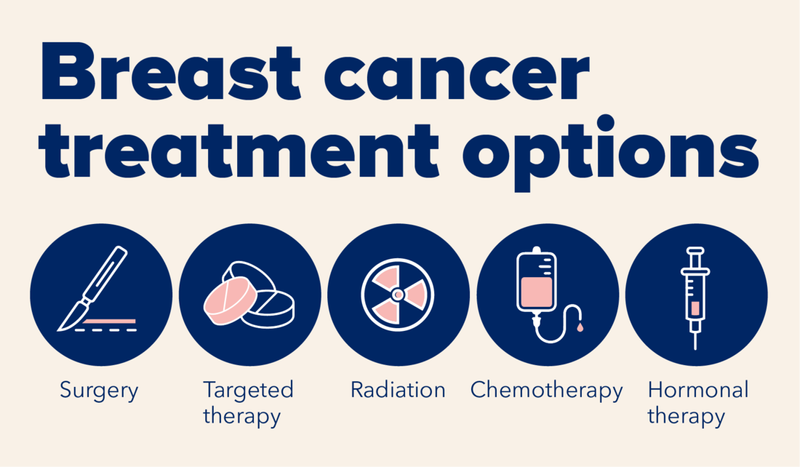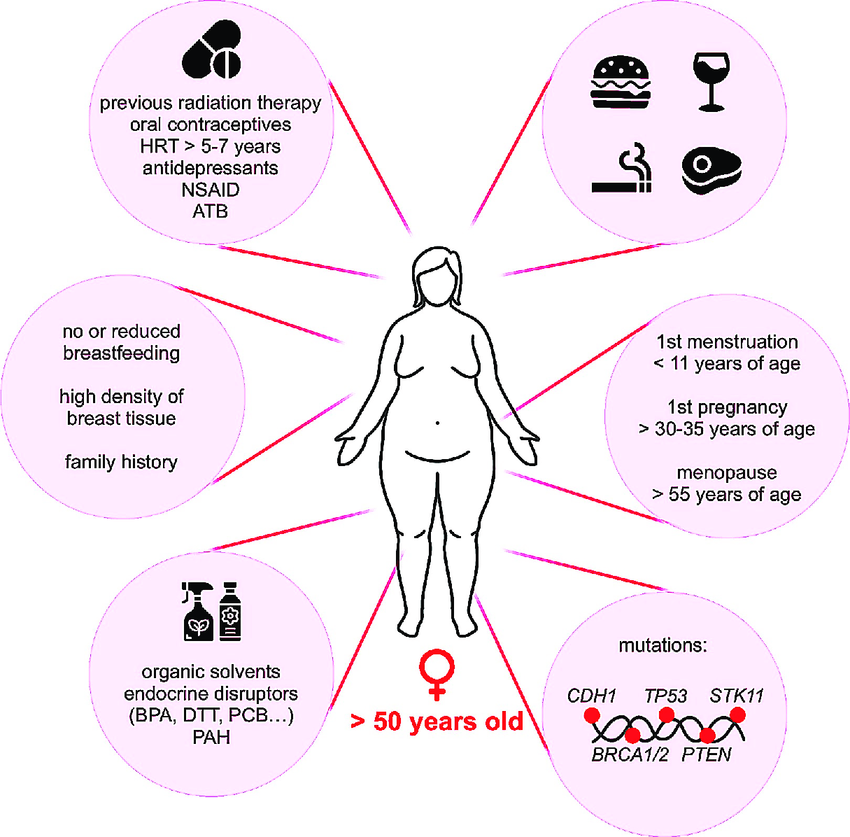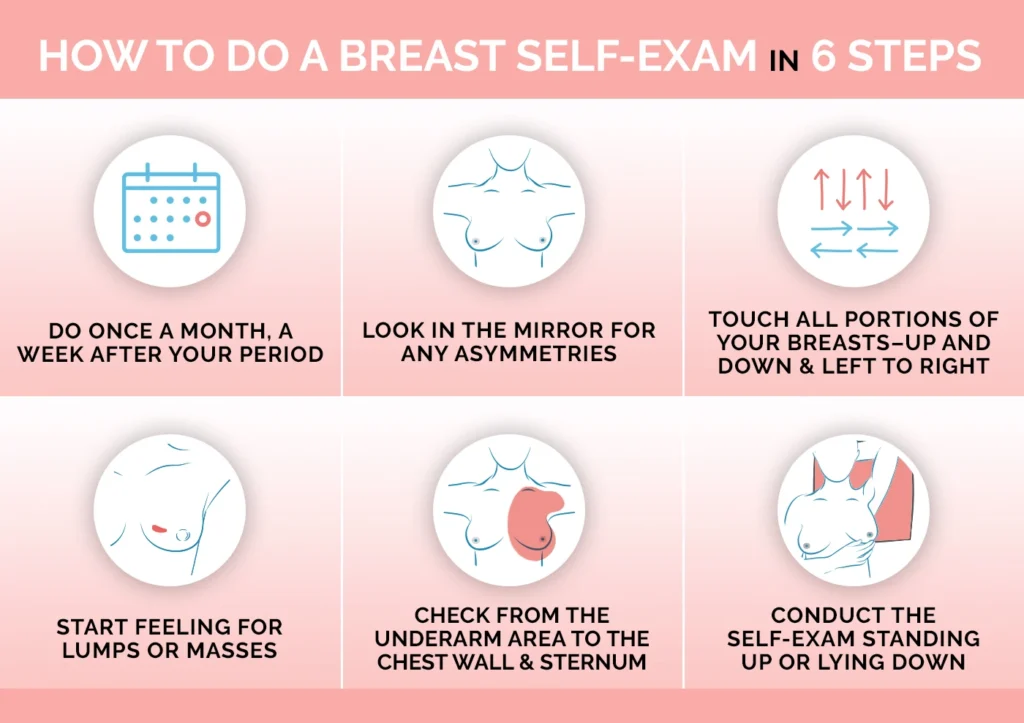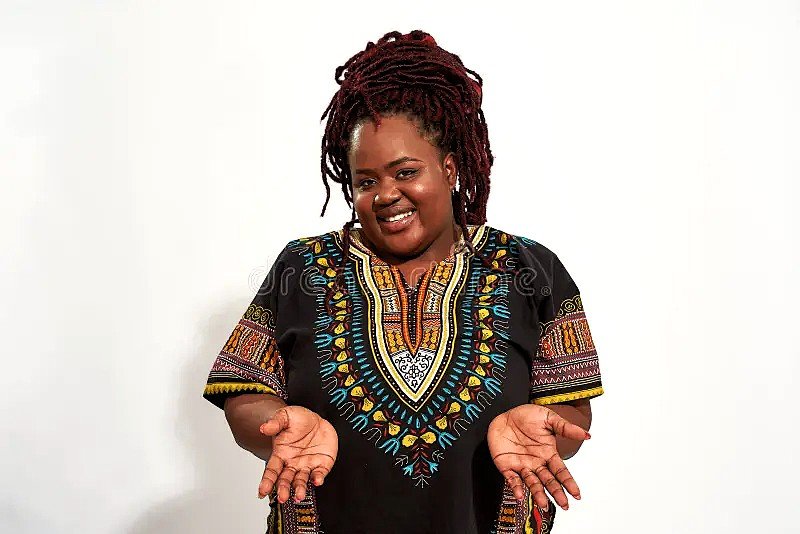
Breast cancer is the most common cancer among women worldwide. It occurs when the cells in the breast grow uncontrollably and form a tumor.
Breast cancer accounts for 20-30% of all cancer cases of all cancer cases among women in sub-Saharan Africa (SSA). It is often diagnosed at younger ages and at later stages, leading to poor outcomes.
The 5-year survival rates for breast cancer in SSA are below 50%, compared to over 90% in high income countries. This is due to late diagnosis and limited access to treatment.
Early detection is critical in improving the survival rate and treatment success.
Unfortunately, in sub-Saharan Africa, awareness of breast cancer remains low, and many women are diagnosed at an advanced stage.
Causes of breast cancer
While the exact cause of breast cancer is unknown, several risk factors have been identified:
- Age: The risk of breast cancer increases as women get older.
- Family history: Women with a family history of breast cancer are at higher risk.
- Genetic mutations: Inherited gene mutations, like BRCA1 and BRCA2, increase the risk.
- Hormonal factors: Long-term exposure to estrogen, such as through early menstruation or late menopause, can elevate risk.
- Lifestyle factors: Obesity, lack of physical activity, and excessive alcohol consumption are linked to a higher likelihood of developing breast cancer.
The natural history of breast cancer - Without early diagnosis and effective treatment
Without treatment, breast cancer can progress rapidly. It typically begins as a small lump in the breast or armpit that can grow over time.
As the tumor grows, cancer cells can spread to nearby tissues and lymph nodes and eventually metastasize to other organs like the lungs, liver, and bones.
The earlier breast cancer is detected, the better the chances of controlling it before it spreads.
How is breast cancer managed - treated, and for how long?
Breast cancer is treated based on its stage and specific characteristics. Treatment options include:
- Surgery: Removing the tumor (lumpectomy) or the entire breast (mastectomy).
- Radiation therapy: Targeting the cancerous area with high-energy radiation.
- Chemotherapy: Using drugs to kill cancer cells throughout the body.
- Hormone therapy: For cancers sensitive to hormones, blocking hormone effects can slow cancer growth.
- Targeted therapy: Drugs that specifically target cancer cells without harming normal cells.
- Duration of treatment: Can vary from a few months for early-stage cancers to years for advanced cases, especially when chemotherapy or hormone therapy is used.
The different treatment options for breast cancer

Key risk factors for breast cancer
- Age: Most breast cancer cases are diagnosed in women over 50.
- Family history: A close relative with breast cancer increases risk.
- Personal history of breast cancer: Having had breast cancer increases the risk of developing it again.
- Genetic factors: Mutations in BRCA1 and BRCA2 genes.
- Hormonal influences: Long-term hormone replacement therapy, early menstruation, or late menopause.
Breast cancer risk factors

Complications of breast cancer - if untreated or poorly treated
If left untreated, breast cancer can spread to other parts of the body (metastases), leading to severe pain, disability, and ultimately, death.
Cancer cells can invade nearby tissues, including the chest wall and skin.
Advanced breast cancer can cause bone pain, difficulty breathing, liver failure, and neurological issues if it spreads to the brain.
Key actions recommended for the prevention of breast cancers in women
- Regular screening: Mammograms can detect breast cancer early when it’s most treatable. Women over 40 should get regular screenings.
- Self-examinations: Regular self-exams can help detect any unusual lumps or changes in the breast.
- Healthy lifestyle: Maintaining a healthy weight, exercising regularly, and reducing alcohol consumption can lower the risk of breast cancer.
- Family history awareness: Women with a family history of breast cancer should consider genetic counseling and, in some cases, preventive measures like more frequent screenings or preventive surgery.
Recommendations for the screening of breast cancer by age groups - Latest guidelines
Ages 20-39:
- Breast self-exam (BSE): Optional, but it’s beneficial for women to become familiar with how their breasts normally look and feel.
- Clinical breast exam (CBE): Every 1-3 years during routine checkups.
Ages 40-49:
- Mammogram: The American Cancer Society suggests women may start yearly mammograms at 40, but others recommend discussing the benefits and risks with a healthcare provider to decide the right time to begin screening.
- Clinical breast exam (CBE): Every year during routine checkups.
- Breast self-exam (BSE): Optional.
Ages 50-74:
- Mammogram: Every 1-2 years, depending on individual risk factors and guidelines followed.
- Clinical breast exam (CBE): Every year during checkups.
- Breast self-exam (BSE): Optional.
Ages 75 and older:
- Mammogram: Screening decisions should be based on individual health status and preferences, as benefits may decline with age.
- Breast self-exam (BSE) and CBE: Optional, based on the individual’s health and risk.
American cancer Society Guidelines for Breast Cancer Screening – 2024

The place and importance of regular breast self-examination (BSE)
Breast self-examination (BSE) is an important step in becoming familiar with the normal look and feel of your breasts, which can help in early detection of any changes, such as lumps, swelling, or changes in shape.
While it’s no longer recommended as a substitute for clinical exams or mammograms, BSE is still a helpful self-care tool for early breast cancer awareness, especially when combined with routine screenings.
Importance of Breast Self-Examination (BSE):
- Early Detection: BSE helps women detect changes or lumps in their breasts early. Some women discover breast cancer through BSE before any clinical exams.
- Breast Awareness: Regular self-exams promote familiarity with your breasts, making it easier to spot any abnormal changes early.
- Complement to Screenings: While mammograms and clinical exams are critical, BSE allows you to stay aware between regular screenings.
How to Perform a Breast Self-Examination:
Follow these five steps for a thorough breast self-exam:
Step 1: Examine in Front of a Mirror
- Stand in front of a mirror with your shoulders straight and arms by your sides.
- Check for:
- Any visible changes in the shape, size, or symmetry of your breasts.
- Any swelling, dimpling, puckering, or bulging of the skin.
- Changes in the nipples (like inversion) or any discharge (not related to breastfeeding).
Next, repeat the exam with your arms raised over your head.
Step 2: Raise Your Arms
- Raise your arms overhead and check for the same changes as in Step 1 from different angles.
- Look for any differences in the shape or size of your breasts.
Step 3: Check for Nipple Discharge
- While still in front of the mirror, gently squeeze each nipple between your thumb and finger to check for any fluid discharge (this could be milky, yellow, or even bloody).
Step 4: Feel Your Breasts While Lying Down
- Lie down flat on your back. This position makes the breast tissue spread evenly across your chest, making it easier to feel for abnormalities.
- Use your right hand to examine your left breast and vice versa.
- Technique:
- Use the pads of your three middle fingers, keeping them flat and together.
- Apply light pressure to feel the tissue just beneath the skin, medium pressure for the tissue in the middle of the breast, and firm pressure to check deeper tissue.
- Follow a circular pattern from the outer edge of the breast toward the nipple, or use an up-and-down motion across the entire breast.
Ensure you cover the entire breast, from collarbone to the top of your abdomen and from your armpit to your cleavage.
Step 5: Feel Your Breasts While Standing or Sitting
- Many women find it easiest to feel their breasts when their skin is slippery, so doing this in the shower is helpful.
- Raise your right arm and use your left hand to feel your right breast, following the same techniques as in Step 4. Repeat on the other side.
What to Look for during Breast Self-Examination (BSE):
- Lumps: A lump in the breast or underarm area that feels different from the surrounding tissue.
- Changes in Size/Shape: One breast becoming significantly different in size or shape.
- Skin Texture Changes: Dimpling, redness, or scaliness.
- Nipple Changes: Inversion (pulling in of the nipple), discharge, or changes in the color or texture of the areola.
When to See a Doctor:
If you notice any of the changes mentioned during your self-exam, make an appointment with your healthcare provider as soon as possible for further evaluation.

Remember
Breast cancer is a significant health concern for women, but early detection and treatment can save lives.
Awareness of risk factors, regular screening, and maintaining a healthy lifestyle are key to reducing breast cancer incidence and mortality.
In sub-Saharan Africa, improving breast cancer education and expanding access to screening can help prevent late-stage diagnoses and reduce mortality rates.


